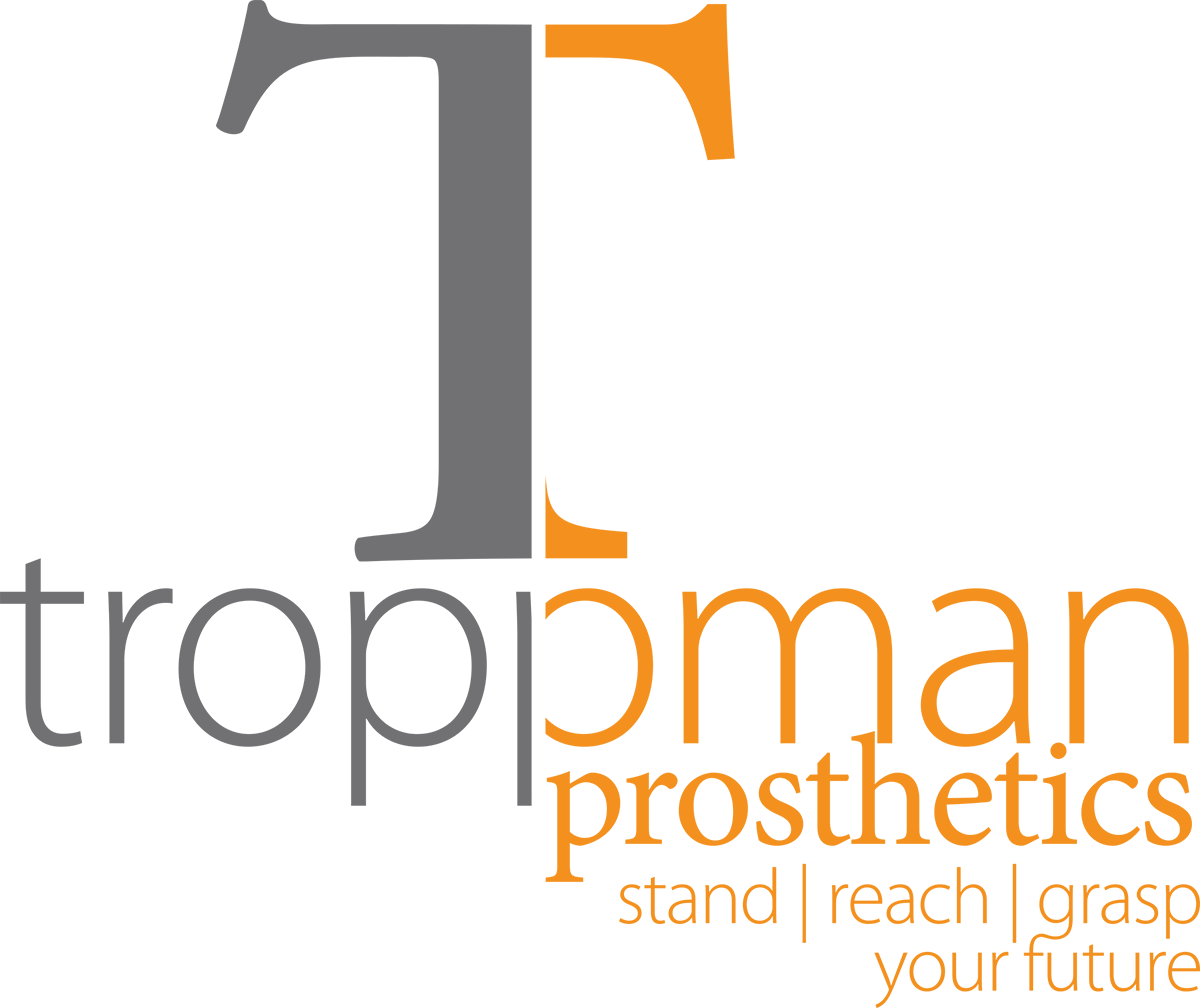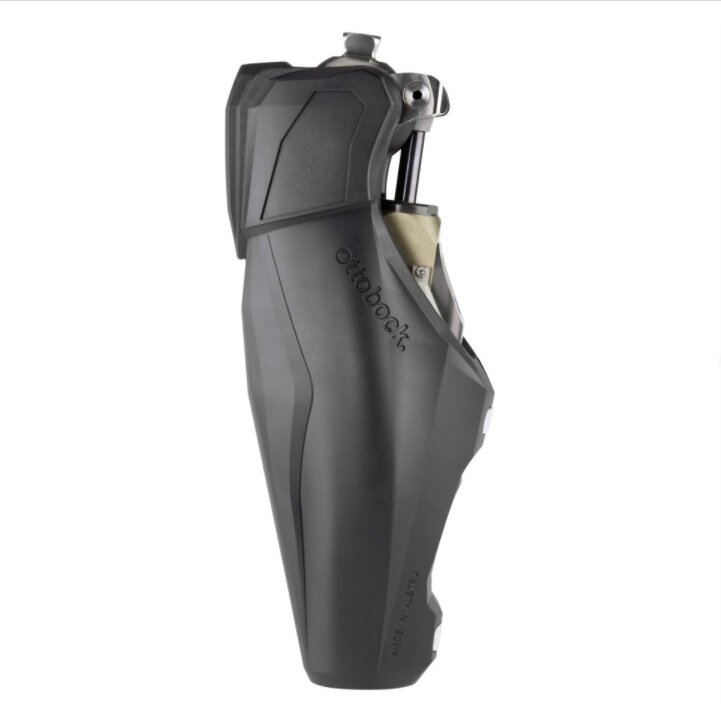Upper Extremity
Our patients include any upper extremity including partial finger amputees, partial hand amputees, wrist disarticulation amputees, transradial amputees, transhumeral amputees or shoulder disarticulations. The type of prosthetic device and patient care plan will be thoroughly examined throughout your appointments to determine what is best suited for you. With extensive knowledge in both conventional and high tech prostheses Troppman Prosthetics is equipped to ensure you have examined all options available to you.
Click a product to learn more.
Myoelectric Prostheses
*iLimb Quantum by Ossur
Cosmetic Prostheses
*LivingSkin by Ossur
Partial Hand Solutions
*MCP Driver by Naked Prosthetics
Myoelectric Prostheses
Myoelectric prostheses utilize muscle contractions and their signals to activate a pre-programmed function to a terminal device. Some myoelectric devices simply open and close grip, some rotate the wrist for positioning, while some can also be much more advanced and have fully articulating fingers to perform more than one task. As technology advances, we stay up to date with new products; the latest being pattern recognition systems like COAPT or IBT. These new systems utilizes multiple electrodes to distinctly change the grip pattern to the next seamlessly. Feel free to ask your prosthetist for more details on what is available to you.
Conventional Prostheses
Conventional prostheses utilize body control to operate a terminal device. Though this design has been around for many years, it is still very effective today in performing generic tasks like holding onto objects or assisting with balance of the body. There are many types of terminal devices an amputee can look into to perform specific tasks such as golfing, riding a bike, and many more. We work with several partners listed below such as TRS Prosthetics, which create solutions for upper extremity amputees. For more ideas, feel free to contact your prosthetist and work alongside them to find the best product for you!
Cosmetic Prostheses
Cosmetic prostheses can serve an important purpose and function. There are a wide range of options that vary depending on cost and different solutions based on amputation level. For high-detailed hand prostheses, silicone is typically used. For some patients, it is important to have something that they feel confident with. It can benefit the mind but also provide assistive function. This can be through stabilizing objects, providing symmetry and muscle balance, or assisting the sound side with everyday tasks. Ask us more about options that may suit your needs.
Partial Hand Solutions
We have worked with many companies to find solutions for patients with even the smallest of amputations to improve function and overall confidence and mental health. The hand is an extremely difficult tool to replicate and replace as it is capable of fine motor skills and extreme heavy lifting at the same time. Beyond silicone cosmetic solutions, there are several companies we work with that aim to provide function through remaining or existing movements of the hand. Contact us if this is of interest to you!
Lower Extremity
We service patients with different levels of amputations including partial feet, symes, transitbials, and transfemorals. At our clinic we are expertly trained to accompany you along the journey to restore as much functional performance, mobility, and independence as possible. We believe in a partnership with our patients to discover best solutions for each patient as everyone is unique in their own special way.
Click a product to learn more.
Microprocessor Feet
The first microprocessor foot was released in 2006 where it dared to address the issue of varying uneven terrain and slopes. Conventional feet had limitations particularly when walking up or down slopes because the ankle is fixed. This made it difficult for amputees to adjust and accommodate. Today, microprocessors have improved battery power and life, faster reaction times, and more accurate response to environmental factors like uneven terrain and slopes to provide the user stability and safety in unpredictable environments. It is important to note that with higher technology, more training may be necessary in order to fully utilize its potential. For more information to see if this option is right for you, please contact your prosthetist.
Microprocessor Knees
The microprocessor knee (MPK) was first evented at the University of Alberta in Edmonton. It was the first of its kind to have software programmed into a knee to control swing and stance. MPK’s are extremely stable knees that react in real-time to provide the user with smooth and stable gait regardless of the terrain. Some MPK’s are even capable of stair ascent. There are many studies done proving the validity and advantages of using a MPK like reduced strain on the sound side, reduced falls reported , and improved speeds of walking. Like with any higher technology, training with and learning the device is important to maximize its function. Ask your prosthetist for more information today!
Conventional Feet and Knees
Though there are lots of new technology that address many obstacles for the amputee, costs usually is the biggest drawback. As great as new technology is, there are still a lot of products in the prosthetic market today that prove to be exceptionally well-suited for the amputee. Ottobock C-legs and Genium knees are world renown as they were the first to be ever invented back in 1997 and is the most studied in the market. It provides superior stability in various terrain, environment and situations by constantly sampling real-time feedback while a patient walks. For more information, please ask your prosthetist to find what is best suited for you!
Partial Feet Solutions
Partial foot prostheses are important to amputees who require balance, stability, or in general comfort. The goal is to allow the amputee walk for longer periods of time without as much pain and discomfort.
Pediatrics
We understand the unique challenges our pediatric patients face as we must account for all the physical and emotional changes happening during development for not just the patient, but for the family. For this reason, we work closely with families and rehabilitation teams, and do our best so that the process of adapting to a new prosthesis is as smooth as possible.
We also understand that our pediatric population might need more replacements, changes, and adjustments, and are ready to accommodate all these needs to ensure comfort, function and safety.
We love the enthusiasm kids bring to our clinic and are ready to learn more about their dreams for the bright future.


















